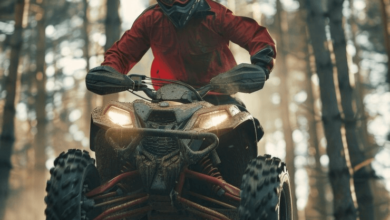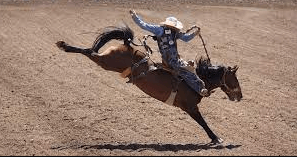How Can I Train My Horse For Combined Driving?

Combined driving is a thrilling equestrian sport that showcases the skills and athleticism of both horse and driver. Whether you’re a seasoned competitor or new to the world of combined driving, training your horse for this demanding discipline requires careful preparation and attention to detail. This article will provide you with valuable insights on how to train your horse for combined driving, focusing on establishing a strong groundwork, improving your horse’s fitness, and preparing for the three phases of competition.
To begin with, it is essential to lay a solid foundation by establishing a strong groundwork with your horse. Groundwork involves building trust and communication between you and your equine partner through various exercises such as lunging, long-lining, and desensitization. By developing a solid relationship based on respect and clear cues, you can ensure that your horse will be responsive and obedient during combined driving competitions.
Once you have established a strong groundwork, it is crucial to assess and improve your horse’s fitness level. Combined driving requires stamina, strength, and agility from both horse and driver. Gradually increase the intensity of your training sessions, incorporating exercises such as interval training, hill work, and dressage movements specific to combined driving. Regular conditioning will not only enhance your horse’s physical capabilities but also prevent injuries during the rigorous demands of competition.
By following these steps in training for combined driving, you can set yourself up for success in the exhilarating world of this captivating equestrian sport.
Establish a Strong Groundwork with Your Horse
Developing a solid foundation with your equine companion is crucial when preparing for combined driving, as it establishes a strong groundwork that will facilitate further training and enable effective communication between horse and driver.
Developing trust and building a strong bond are essential components of this process. Trust can be fostered through consistent handling, positive reinforcement, and clear communication. It is important to establish yourself as a reliable leader who provides comfort and security for the horse.
Building a strong bond involves spending quality time with the horse, engaging in activities that promote relaxation and mutual understanding. Through these practices, you can create a harmonious relationship based on trust and respect, which will serve as the basis for successful combined driving training.
Assess and Improve Your Horse’s Fitness
Enhancing the physical condition of your equine companion is essential in preparing them for the demands of combined driving.
To improve endurance and develop strength, there are several key factors to consider. Firstly, implementing a structured exercise program that gradually increases in intensity and duration will help build your horse’s stamina over time. This can include regular sessions of long-distance trotting or cantering, hill work, and interval training.
Secondly, incorporating cross-training activities such as lunging, pole work, and hill climbing can help target specific muscle groups and improve overall fitness.
Lastly, paying attention to your horse’s diet and nutrition is crucial for maintaining optimal health and performance. Ensuring they have a balanced diet with appropriate amounts of protein, carbohydrates, fats, vitamins, and minerals will support their physical development.
By prioritizing their fitness through these strategies, you are setting the foundation for a successful combined driving partnership with your horse.
Prepare for the Three Phases of Combined Driving
In combined driving, it is crucial to understand the dressage phase, which tests the horse’s obedience and precision in performing a set of predetermined movements.
Learning the skills needed for the marathon phase is equally important, as this phase requires both endurance and agility from the horse.
Additionally, practicing precision and accuracy in the cones phase is essential, as it assesses how well the horse can navigate through a series of closely spaced cones within a given time frame.
Understand the Dressage Phase
Understand the dressage phase is crucial in training a horse for combined driving, as it lays the foundation for precise and controlled movements that showcase the horse’s obedience and responsiveness.
The dressage phase of combined driving requires the horse to perform a series of predetermined movements with elegance and grace. It is essential to have a deep understanding of the dressage principles and techniques in order to properly train a horse for this phase.
Proper training techniques for dressage focus on developing the horse’s balance, suppleness, and responsiveness to aids. This includes working on exercises such as circles, transitions, lateral movements, and collection.
Through consistent practice and repetition, the horse learns to move harmoniously with its driver, demonstrating fluidity and accuracy in each movement. Attention to detail is key during this phase, as judges evaluate not only the correctness of each movement but also the overall harmony between horse and driver.
Read also: How Can Reining Improve A Horse’s Performance?
By mastering the dressage phase through proper training techniques, horses can excel in combined driving competitions and demonstrate their full potential.
Learn the Skills Needed for the Marathon Phase
The mastery of the marathon phase requires a thorough understanding and application of the technical skills necessary to navigate through complex obstacles with precision and agility, akin to a skilled ballet dancer gracefully maneuvering through a challenging routine.
To successfully complete this phase of combined driving, it is essential for both horse and driver to develop speed and endurance, as well as master obstacle navigation.
The horse must be trained to maintain a consistent pace throughout the course while conserving energy for the entire marathon distance.
Additionally, the driver must possess excellent communication skills in order to guide the horse efficiently through various obstacles such as water hazards, bridges, and tight turns.
The ability to make split-second decisions and adjust their driving technique accordingly is crucial for maintaining momentum without sacrificing accuracy.
Furthermore, mastering obstacle navigation involves teaching the horse how to approach each obstacle with confidence and tackle them with precision and efficiency.
This requires careful training in areas such as straightness, adjustability of stride length, responsiveness to rein aids, and balance during turns.
Ultimately, by developing these skills together as a team, horse and driver can achieve success in the marathon phase of combined driving while showcasing their unity and athleticism on the course.
Practice Precision and Accuracy in the Cones Phase
To achieve mastery in the cones phase, drivers must hone their skills in executing precise and accurate maneuvers, requiring a deep understanding of the technical aspects involved in navigating through a series of tightly spaced cones.
To improve cone handling, drivers need to develop quick reflexes and an ability to make split-second decisions. This phase requires drivers to navigate through a course that consists of pairs of cones set at specific distances apart, testing their ability to turn sharply and maneuver around obstacles.
The key to success lies in practicing these maneuvers repeatedly until they become second nature. Drivers must learn how to use their reins effectively, applying subtle cues to guide the horse through each turn while maintaining control and balance.
Additionally, they need to understand the importance of proper positioning and timing when approaching each cone, as even the slightest miscalculation can result in penalties or time faults.
By practicing precision and accuracy in the cones phase, drivers can enhance their overall performance and increase their chances of success in combined driving competitions.
Frequently Asked Questions
What are the basic principles of establishing a strong groundwork with a horse for combined driving?
Establishing a strong groundwork with a horse for combined driving involves two fundamental principles: establishing trust and building obedience. Trust is built through consistent, positive interactions, while obedience is developed through clear communication and reinforcement of desired behaviors.
How can I assess my horse’s fitness level before beginning combined driving training?
Assessing a horse’s fitness level is crucial before beginning combined driving training. It ensures the horse’s readiness for strenuous activities and minimizes the risk of injury. Importance lies in conditioning, which optimizes performance like a finely tuned instrument in an orchestra.
Are there any specific exercises or techniques to improve my horse’s fitness for combined driving?
To improve a horse’s fitness for combined driving, specific exercises and techniques can be implemented. These may include interval training, hill work, trot sets, pole work, and long rein exercises to develop cardiovascular endurance, strength, coordination, and suppleness.
What are the three phases of combined driving and how can I prepare my horse for each of them?
The three phases of combined driving are dressage, marathon, and cones. Training techniques for dressage include suppling exercises and transitions. For marathon, conditioning is crucial, along with obstacle training. Cones require precision and accuracy. Equipment needed includes a carriage, harness, and appropriate attire.
Can you provide any tips or recommendations for successfully navigating the obstacles during the marathon phase of combined driving?
To successfully navigate obstacles during the marathon phase of combined driving, it is crucial to have tips and strategies in place. Some recommendations include maintaining control through proper rein management, utilizing effective steering techniques, and adjusting speed according to the difficulty of each obstacle.
Conclusion
In conclusion, training a horse for combined driving requires a strong groundwork, improved fitness, and preparation for the three phases of the sport. By establishing a solid foundation through ground exercises and building trust with your horse, you can lay the groundwork for success in combined driving.
Assessing and improving your horse’s fitness is crucial to ensure they are physically capable of performing at their best during each phase. Moreover, understanding and preparing for the three phases – dressage, marathon, and cones – will help you navigate the challenges that lie ahead.
Just as an architect carefully plans every detail of a building before construction begins, so too must you carefully lay the groundwork with your horse. Picture yourself meticulously measuring each angle and selecting only the strongest materials to build upon. With this strong foundation in place, your equine partner will be better equipped to tackle any obstacles that come their way.
Consider your horse’s fitness as a finely tuned engine within their body. Just like an engine needs regular maintenance to perform optimally, your horse’s physical condition must be assessed and improved to ensure they have sufficient stamina and strength for combined driving. Imagine yourself diligently fine-tuning each component of this equine engine – oiling joints, tightening bolts, and ensuring everything runs smoothly.
As you embark on this journey of training your horse for combined driving, imagine yourself as a seasoned coach preparing an athlete for their biggest competition yet. You know every step of the process intimately – from laying the very first brick in the foundation to perfecting each detail of their physical prowess. With dedication and expertise guiding you along the way, both you and your equine partner will be ready to conquer any challenge that comes your way in combined driving.



